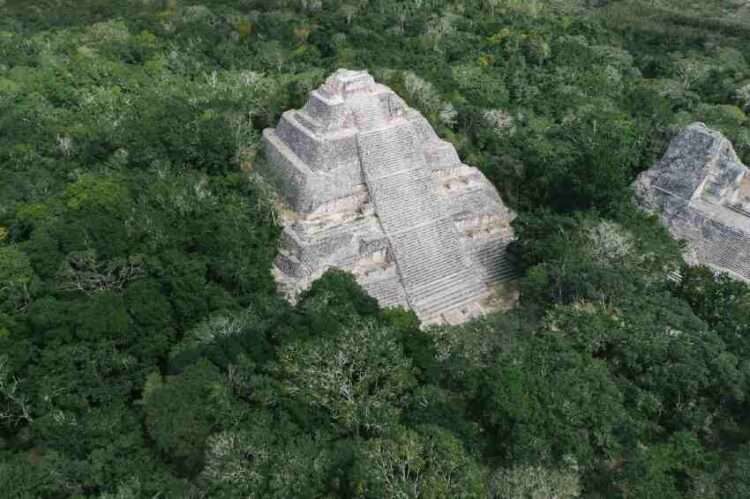Imagine discovering entire cities that have been lost for centuries, hidden beneath dense jungles. That’s exactly what’s happening as scientists use new technology to uncover secrets of the ancient Maya civilization.
Deep in the tropical forests of Mexico’s Campeche state, archaeologists have made groundbreaking discoveries about the Maya civilization. Using advanced airborne laser scanning technology called lidar, they have revealed urban landscapes that were previously unknown. According to a study published in Cambridge , these findings challenge what we thought we knew about the extent and density of ancient Maya cities.
A New Way to See the Past
Lidar, which stands for Light Detection and Ranging, is a technology that allows researchers to “see” through the thick jungle canopy. By sending laser pulses from an aircraft down to the ground and measuring how long they take to return, scientists can create detailed maps of the terrain below. This method has revolutionized archaeology in forested areas, revealing structures that are invisible from the ground.
In the case of Campeche, lidar surveys were originally conducted for environmental purposes, such as monitoring forests. However, archaeologists realized that these datasets could be repurposed to study ancient human settlements without the usual biases that come from focusing on known archaeological sites.
Discovering Valeriana: A Lost Maya City
One of the most exciting finds from the lidar data is a previously unknown city that researchers have named Valeriana. Located near a freshwater lagoon, Valeriana features two major hubs of monumental architecture, including temples, plazas, and even a ballcourt. The city is connected by a network of roads and is surrounded by dense residential areas and agricultural fields.
According to the researchers, Valeriana has all the characteristics of a Classic Maya political capital. It even includes a specific architectural arrangement known as an E-Group, which suggests that the city was founded before 150 AD. This challenges previous notions about the distribution and development of Maya cities in the region.

A Dense and Urbanized Landscape
The lidar data didn’t just reveal Valeriana. It showed that the entire region was more densely populated and urbanized than previously thought. The researchers found evidence of continuous settlements, extensive agricultural infrastructure like terraces and field walls, and even intricate water management systems.
“These findings demonstrate that dense regional-scale settlement and high variability in local-scale settlement density are characteristic of the central Maya Lowlands,” the study states. This means that the ancient Maya inhabited not just isolated cities but extensive urban landscapes that were interconnected.
Changing Our Understanding of the Maya Civilization
Before these lidar surveys, much of the region was considered a “blank spot” on archaeological maps. Traditional methods of exploration are challenging in dense jungles, and researchers often focused on known sites. However, the use of lidar has allowed for a more unbiased and comprehensive view of the area.
According to Dr. Luke Auld-Thomas, one of the study’s authors, “The Alianza data demonstrate that cities and dense settlement are simply ubiquitous across large swaths of the central Maya Lowlands.” This challenges earlier beliefs that the Maya civilization was composed of sparsely populated city-states surrounded by uninhabited forests.
Implications for Archaeology and History
These discoveries have significant implications for how we understand ancient civilizations, not just the Maya. They suggest that tropical regions, often considered too challenging for large urban populations, were actually home to sophisticated and densely populated societies.
Moreover, the use of environmental lidar data sets a new precedent for archaeological research. By utilizing data collected for other purposes, researchers can explore areas that were previously inaccessible or overlooked due to resource constraints.
Future Explorations and Discoveries
The study highlights the importance of interdisciplinary collaboration and open-access data. As more lidar data becomes available, either from environmental projects or new archaeological surveys, we can expect to find even more hidden cities and settlements.
The researchers hope that their work will inspire further investigations into these dense pasts. They emphasize that understanding how these ancient societies adapted to and transformed their environments can provide valuable lessons for our own interactions with the natural world.
The discovery of Valeriana and other urbanized areas in Campeche is reshaping our understanding of the Maya civilization. It reveals a complex network of cities and settlements that were intricately connected and highly developed. These findings not only enrich our knowledge of history but also demonstrate the incredible potential of modern technology to uncover the secrets of the past.
As we continue to explore and learn, who knows what other mysteries lie hidden beneath the jungle canopy, waiting to rewrite the history books once again?




